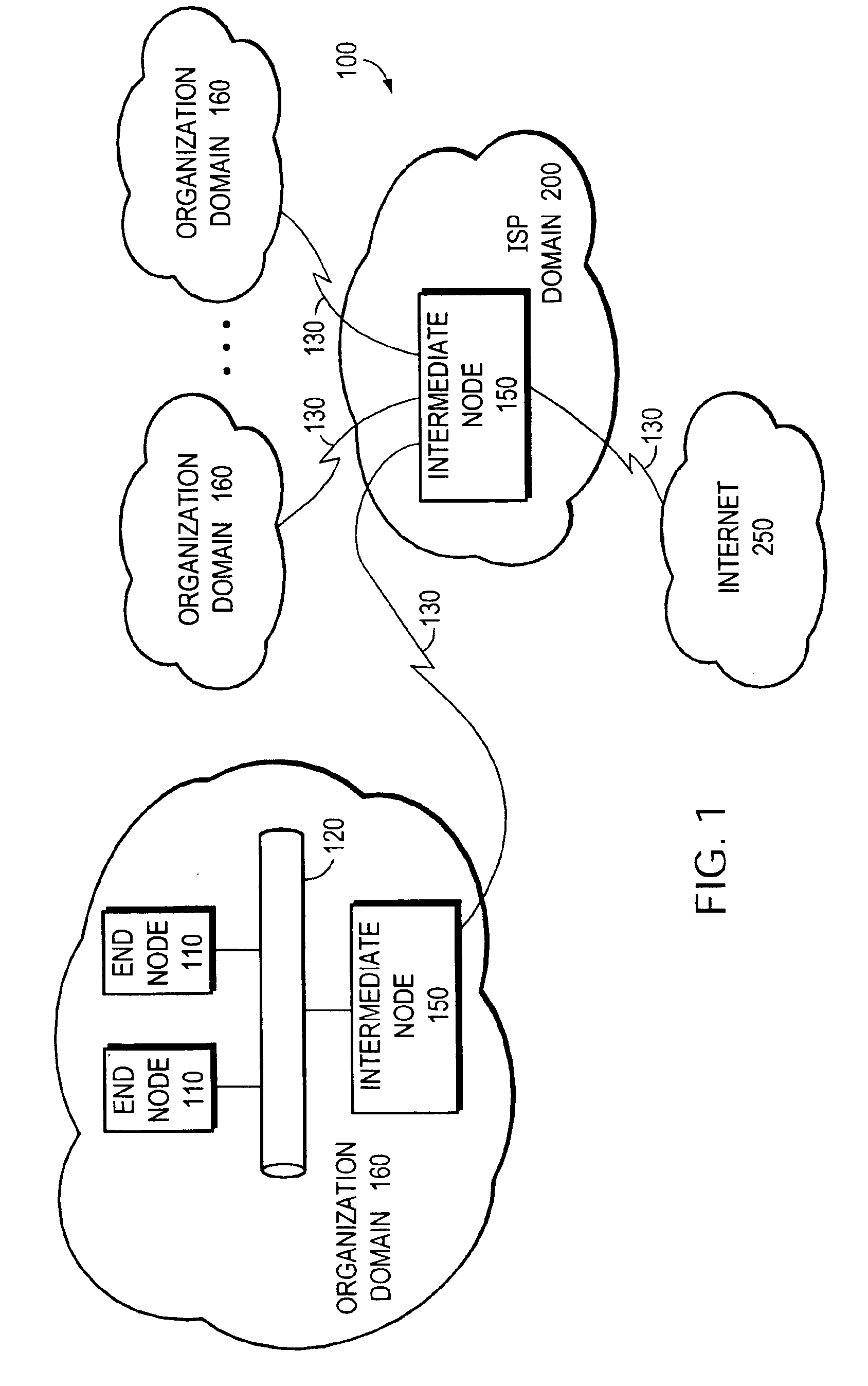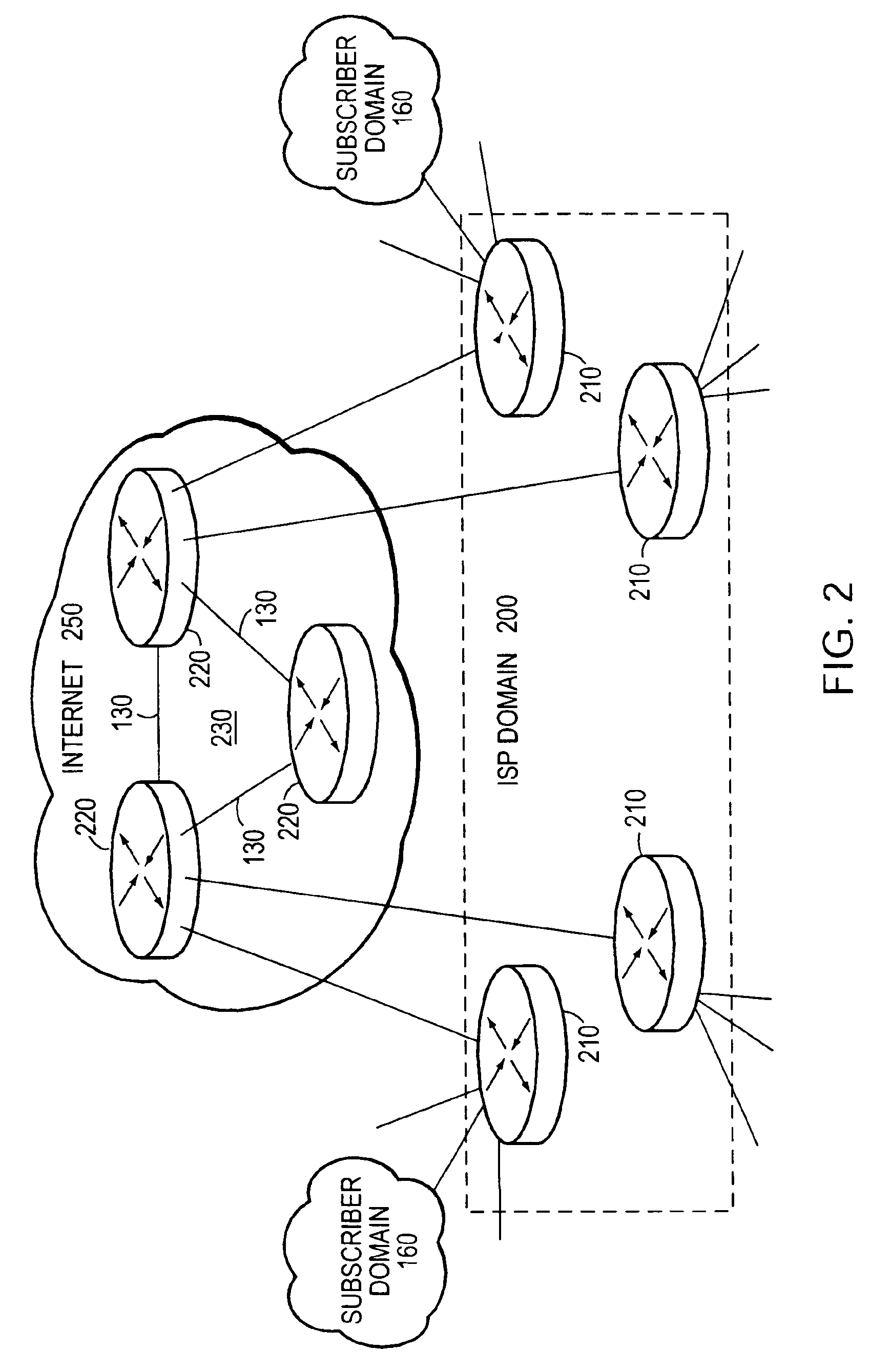High performance protocol for an interconnect system of an intermediate network node
a network node and high performance technology, applied in the field of communication network intermediate nodes, can solve the problems of reducing the cost of floor space, requiring additional structure, and requiring high-end equipment, so as to minimize bandwidth waste, maximize throughput, and reduce latency
- Summary
- Abstract
- Description
- Claims
- Application Information
AI Technical Summary
Benefits of technology
Problems solved by technology
Method used
Image
Examples
Embodiment Construction
[0029]FIG. 1 is a schematic block diagram of a computer network 100 comprising a collection of communication links and segments connected to a plurality of nodes, such as end nodes 110 and intermediate nodes 150. The network links and segments may comprise local area networks (LANs) 120 and wide area network (WAN) links 130 interconnected by intermediate nodes 150, such as network switches or routers, to form an internetwork of computer nodes. These internetworked nodes communicate by exchanging data packets according to a predefined set of protocols, such as the Transmission Control Protocol / internet Protocol (TCP / IP). It should be noted that other techniques / protocols, such as the Hypertext Transfer Protocol (HTTP), may be advantageously used with the present invention.
[0030]To interconnect their dispersed private computer networks and / or provide Internet connectivity, many organizations rely on the infrastructure and facilities of Internet service providers (ISPs) rather than pur...
PUM
 Login to View More
Login to View More Abstract
Description
Claims
Application Information
 Login to View More
Login to View More - R&D
- Intellectual Property
- Life Sciences
- Materials
- Tech Scout
- Unparalleled Data Quality
- Higher Quality Content
- 60% Fewer Hallucinations
Browse by: Latest US Patents, China's latest patents, Technical Efficacy Thesaurus, Application Domain, Technology Topic, Popular Technical Reports.
© 2025 PatSnap. All rights reserved.Legal|Privacy policy|Modern Slavery Act Transparency Statement|Sitemap|About US| Contact US: help@patsnap.com



